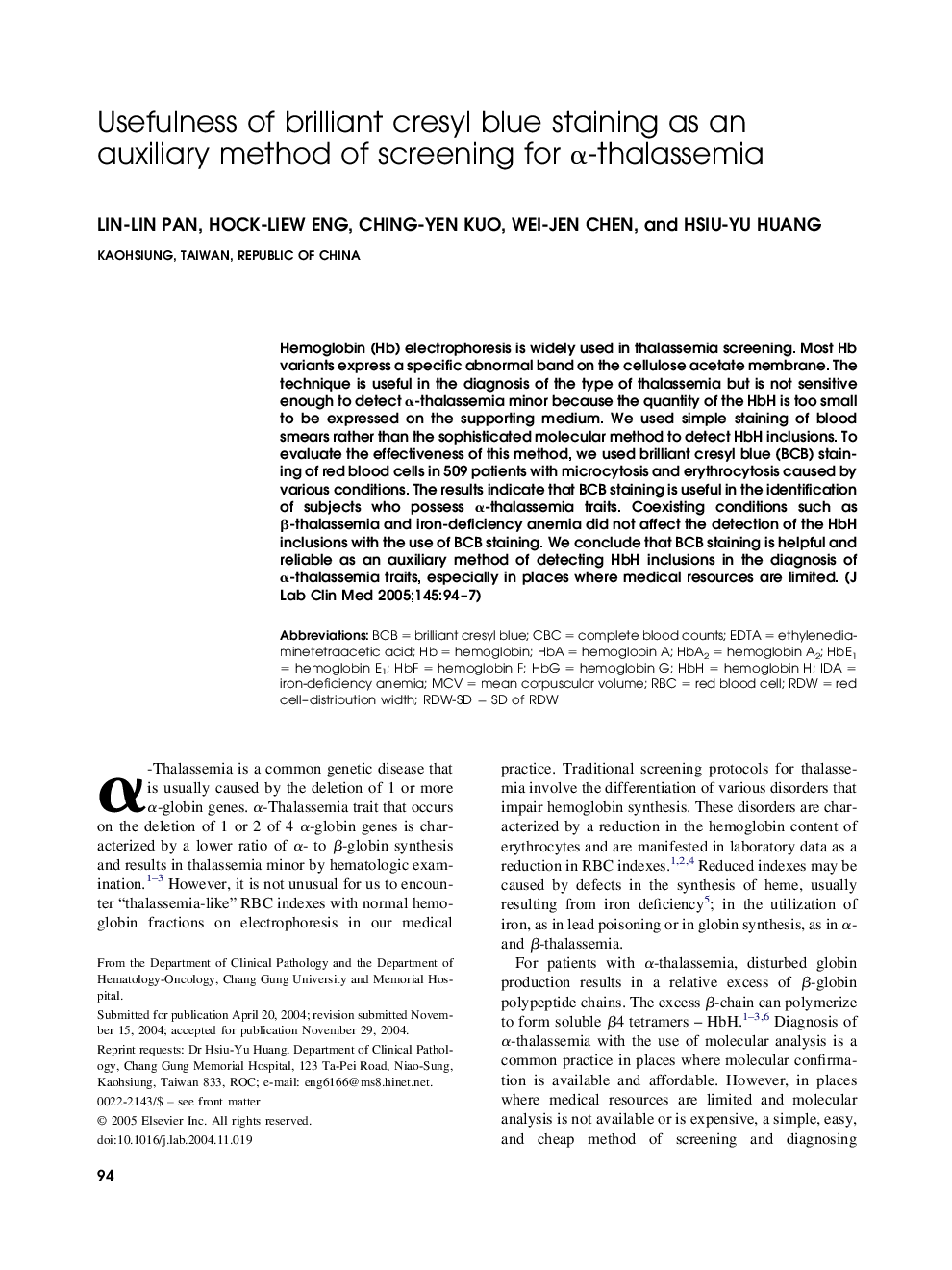| Article ID | Journal | Published Year | Pages | File Type |
|---|---|---|---|---|
| 9296471 | Journal of Laboratory and Clinical Medicine | 2005 | 4 Pages |
Abstract
Hemoglobin (Hb) electrophoresis is widely used in thalassemia screening. Most Hb variants express a specific abnormal band on the cellulose acetate membrane. The technique is useful in the diagnosis of the type of thalassemia but is not sensitive enough to detect α-thalassemia minor because the quantity of the HbH is too small to be expressed on the supporting medium. We used simple staining of blood smears rather than the sophisticated molecular method to detect HbH inclusions. To evaluate the effectiveness of this method, we used brilliant cresyl blue (BCB) staining of red blood cells in 509 patients with microcytosis and erythrocytosis caused by various conditions. The results indicate that BCB staining is useful in the identification of subjects who possess α-thalassemia traits. Coexisting conditions such as β-thalassemia and iron-deficiency anemia did not affect the detection of the HbH inclusions with the use of BCB staining. We conclude that BCB staining is helpful and reliable as an auxiliary method of detecting HbH inclusions in the diagnosis of α-thalassemia traits, especially in places where medical resources are limited.
Keywords
Related Topics
Health Sciences
Medicine and Dentistry
Medicine and Dentistry (General)
Authors
Lin-Lin Pan, Hock-Liew Eng, Ching-Yen Kuo, Wei-Jen Chen, Hsiu-Yu Huang,
